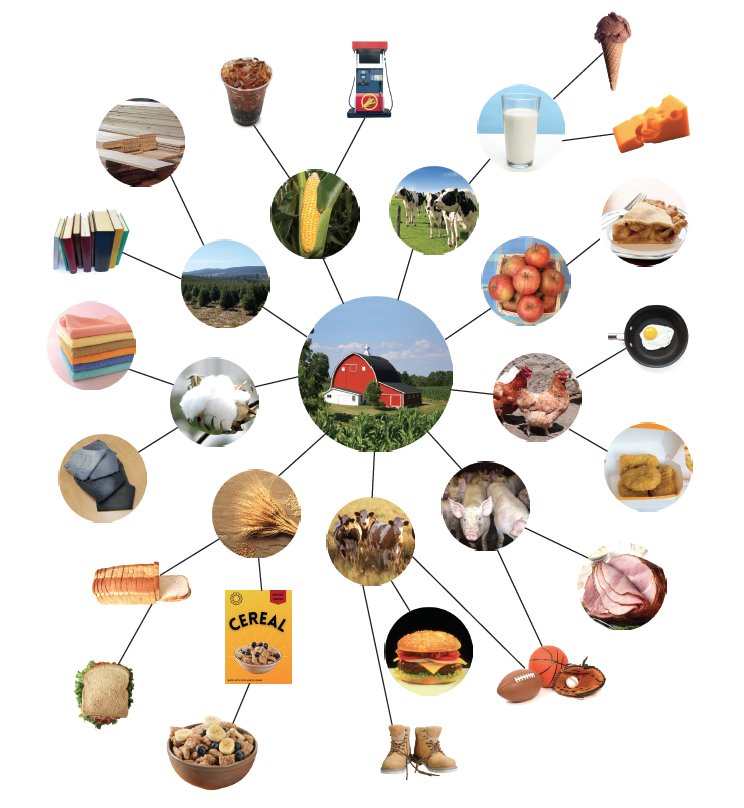Background Agricultural Connections
How do you define the word agriculture? The Merriam-Webster Dictionary states that it is the “science, art, or practice of cultivating the soil, producing crops, and raising livestock and in varying degrees the preparation and marketing of the resulting products.” An accurate definition, but this definition doesn’t impart the integral nature or importance of agricultural products—food, clothing, and shelter—in our daily lives. Surely there is a better way to define agriculture!
This lesson uses graphic organizers as a teaching strategy to explore the definition of agriculture. Graphic organizers are research-based visual instructional tools that facilitate learning and student achievement. The use of graphic organizers is a teaching strategy that meets the needs of most learners, especially visual learners. How do they work? Graphic organizers relate new concepts to the learners’ preexisting understandings, which helps them to recognize new relationships between concepts. These associations help students to retain what they have learned. In addition, these visual tools may be used to help access student knowledge and identify student misconceptions.
One type of graphic organizer is the concept map (also referred to as a concept web), which provides a technique for visualizing the relationships between different concepts. A concept map is a diagram showing the relationships between concepts, which are represented by words or pictures and connected with labeled arrows in a downward-branching, hierarchical structure. The relationship between concepts is articulated in linking phrases (e.g., gives rise to, results in, is required by, or contributes to) written on the lines that connect concepts. Linking phrases can be as simple as are, can be, or are part of. After the initial map is drawn, concepts should be cross-linked to other relevant relationships, often drawing lines going across to other group maps.
Agriculture is a big umbrella term that includes many concepts, ranging from farm to fork and from field to fabric. In addition to food and fiber, agriculture also provides numerous products for industrial use such as linseed oil for paint and corn for fuel. This lesson plan has been designed for young learners who will focus on one aspect of agriculture—farming. Instead of words, these young learners will use pictures and yarn to create a simple concept web and the relationships, or linking phrases, will be discussed as a class while the concept web is completed.
